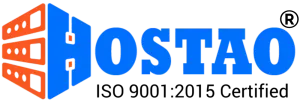Virtual Private Servers (VPS) have become an integral part of modern web development and application hosting. Choosing the right programming language and framework for VPS development is crucial for achieving optimal performance, scalability, and maintainability. In this article, we will explore some of the top programming languages and frameworks that are well-suited for VPS environments.
Python with Django
Python is renowned for its simplicity and readability, making it a popular choice for developers. When combined with the Django framework, Python becomes a robust solution for VPS development. Django follows the model-view-controller (MVC) architectural pattern, aiding in the creation of scalable and maintainable applications. The Django framework also comes with built-in security features, making it a reliable choice for handling sensitive data on VPS.
Node.js with Express
Node.js is a server-side JavaScript runtime that has gained widespread popularity for its event-driven architecture and asynchronous I/O operations. When paired with the Express.js framework, Node.js becomes a powerful choice for VPS development. Express simplifies the process of building scalable and efficient web applications, making it suitable for real-time applications and APIs.
Ruby on Rails
Ruby on Rails, commonly known as Rails, is a web application framework written in the Ruby programming language. It follows the convention over configuration (CoC) and don’t repeat yourself (DRY) principles, streamlining the development process. Rails is well-suited for VPS environments due to its emphasis on developer productivity and code readability, making it easier to maintain and scale applications.
Java with Spring Boot
Java has been a stalwart in enterprise-level development for decades. When coupled with the Spring Boot framework, Java becomes a powerful option for VPS development. Spring Boot simplifies the configuration and deployment of Java applications, allowing developers to focus on building robust and scalable systems. Java’s platform independence also makes it suitable for diverse VPS environments.
Go (Golang)
Go, or Golang, is a statically typed language developed by Google that emphasizes simplicity and efficiency. Go is known for its fast compilation times and strong support for concurrency, making it ideal for building scalable and performant applications on VPS. Its minimalistic syntax and built-in support for handling concurrent operations contribute to its popularity for developing microservices and server-side applications.
PHP with Laravel
PHP remains a prevalent server-side scripting language, and when paired with the Laravel framework, it becomes a compelling choice for VPS development. Laravel simplifies common tasks such as routing, caching, and authentication, allowing developers to focus on building feature-rich applications. Its expressive syntax and active community make it suitable for both small-scale projects and large-scale applications on VPS.
Programming Language vs Scripting Language
Programming languages and scripting languages are essential tools in the world of software development, playing crucial roles in creating diverse applications and systems. While both are used to instruct computers, they have distinct characteristics and applications. In this article, we will explore the differences between programming languages and scripting languages, shedding light on their unique features and use cases.
Programming Language
A programming language is a formal set of instructions that a computer can interpret and execute to perform specific tasks. It provides a structured and systematic way to communicate with computers, allowing developers to create complex software and applications.
Key Features
Compilation: Most programming languages use a compiler to translate the entire source code into machine code before execution. This process results in an executable file that can be run independently of the original source code.
Performance: Programs written in compiled languages generally exhibit better performance than those written in scripting languages. This is because the compilation process optimizes the code for the target machine, making it more efficient.
Portability: Compiled programs are often platform-specific, requiring recompilation for different operating systems. However, some languages, such as Java, use a virtual machine (VM) to achieve platform independence by executing bytecode.
Typing System: Programming languages typically have a statically-typed system, where variable types are declared at compile-time. This allows for early error detection and optimization.
Scripting Language
Definition: A scripting language, on the other hand, is a type of programming language that is interpreted and executed line by line. Scripting languages are often used for automating tasks, rapid application development, and enhancing the functionality of existing software.
Key Features
- Interpretation: Scripting languages are usually interpreted rather than compiled. The source code is executed directly by an interpreter, translating commands into machine code on the fly.
- Flexibility: Scripting languages are known for their flexibility and ease of use. They are often used in scenarios where rapid development and prototyping are essential, allowing developers to quickly test and implement ideas.
- Portability: Scripts are generally more portable than compiled programs, as they can be run on any system with the appropriate interpreter installed. This makes scripting languages suitable for cross-platform development.
- Typing System: Scripting languages often employ dynamic typing, where variable types are determined at runtime. This flexibility simplifies the development process but may lead to runtime errors.
Top Programming Frameworks
In the dynamic landscape of software development, programming frameworks play a pivotal role in shaping the way developers build applications. Frameworks provide a structured foundation, speeding up development processes and promoting best practices. This article explores some of the top programming frameworks that have gained popularity for their efficiency, scalability, and versatility.
Angular
Developed and maintained by Google, Angular is a front-end web application framework written in TypeScript. It follows the Model-View-Controller (MVC) architecture, allowing developers to create dynamic, single-page applications.
Key Features
- Two-way data binding for seamless synchronization between the view and the model.
- Dependency injection for modular and maintainable code.
- Comprehensive testing support with tools like Jasmine and Protractor.
React
Facebook’s React is a JavaScript library for building user interfaces, particularly for creating interactive, component-based applications. It emphasizes a declarative approach to building UIs and focuses on the efficient updating of components.
Key Features
- Virtual DOM for optimal rendering performance.
- Component-based architecture promoting reusability.
React Native extends its capabilities to mobile app development.
Django
Django, a high-level Python web framework, follows the “Don’t Repeat Yourself” (DRY) principle, emphasizing rapid development and clean, pragmatic design. It includes an Object-Relational Mapping (ORM) system for database interaction and follows the Model-View-Template (MVT) architectural pattern.
Key Features
- Admin interface for automatic admin panel generation.
- Built-in security features like protection against SQL injection and cross-site scripting.
Extensive documentation and a thriving community.
Spring Boot
Spring Boot is an extension of the Spring framework, designed to simplify the development of production-ready applications with minimal configuration. It promotes convention over configuration, allowing developers to focus on business logic.
Key Features
- Embedded server support (e.g., Tomcat) for standalone application deployment.
- Spring Boot Starters simplify dependency management.
Spring Boot Actuator for monitoring and managing applications.
Express.js
A minimal and flexible Node.js web application framework, Express.js is widely used for building server-side applications and APIs. It simplifies the creation of robust and scalable web applications with its unopinionated design.
Key Features
- Middleware support for extending application functionality.
- Routing system for defining application endpoints.
Lightweight and fast, ideal for building RESTful APIs.
Ruby on Rails
Also known as Rails, Ruby on Rails is a full-stack web application framework written in Ruby. It follows the Convention over Configuration (CoC) and Don’t Repeat Yourself (DRY) principles, emphasizing developer productivity.
Key Features
- Active Record ORM for database interactions.
- Convention-based file structure for predictable development.
- Gem ecosystem for easy integration of third-party libraries.
Which type of language is better for performance-critical applications?
In the fast-evolving landscape of software development, choosing the right programming language for performance-critical applications is a crucial decision. Performance-critical applications, such as real-time systems, scientific simulations, and high-frequency trading platforms, demand not only robust functionality but also optimized execution speed. In this article, we will explore the factors that contribute to the performance of a programming language and discuss which types of languages are better suited for performance-critical applications.
Factors Influencing Performance
Execution Speed
One of the primary factors influencing performance is execution speed. Languages that offer low-level control, like C and C++, are known for their efficiency in this aspect. Their ability to directly manipulate memory and optimize code at a granular level often results in faster execution.
Memory Management
Efficient memory management is crucial for performance-critical applications. Languages like C and C++ provide manual memory management, allowing developers to have precise control over memory allocation and deallocation. This can be advantageous in scenarios where minimizing memory overhead is essential.
Types of Languages for Performance-Critical Applications
Low-Level Languages (C and C++)
C and C++ are renowned for their low-level control, making them ideal choices for performance-critical applications. They offer direct memory manipulation, efficient code execution, and a high level of optimization. However, the trade-off is increased complexity and a steeper learning curve.
Concurrency-Oriented Languages (Go and Erlang)
Go and Erlang are designed with concurrency in mind, making them suitable for applications that require efficient handling of multiple tasks simultaneously. Go’s simplicity and Erlang’s fault-tolerant features make them compelling options for performance-critical systems with concurrent requirements.
Parallel Processing Languages (Fortran and CUDA-enabled languages)
Fortran, with its historical focus on numerical and scientific computing, excels in parallel processing. Additionally, languages like C or C++ with CUDA support enable developers to harness the power of GPUs for parallel tasks, making them suitable for applications that require intensive parallel computation.
High-Level Languages with Optimized Ecosystems (Java, Python)
High-level languages like Java and Python have gained popularity in performance-critical applications, thanks to their extensive ecosystems. Java’s Virtual Machine (JVM) optimizations and Python’s performance libraries (e.g., NumPy, TensorFlow) provide a balance between development productivity and execution speed.
Is there a clear-cut distinction between programming languages and scripting languages, or do they overlap in certain cases?
In the ever-evolving realm of computer science, the distinction between programming languages and scripting languages has been a topic of discussion and debate. While some argue for a clear-cut boundary between the two, others believe in a more nuanced perspective, suggesting that there are instances where the lines between programming and scripting languages blur. To unravel this intricate web, it is essential to delve into the characteristics, use cases, and historical context of both types of languages.
Programming Languages
Programming languages are often considered the foundation of software development. These languages are designed to allow developers to create a wide range of applications, from system-level software to complex algorithms. Examples of traditional programming languages include C++, Java, and Python. These languages typically require a compilation process, wherein the source code is translated into machine code or an intermediate code before execution.
Scripting Languages
On the other hand, scripting languages are often associated with automating tasks and orchestrating interactions within existing systems. Scripting languages are typically interpreted, meaning that the code is executed line by line without the need for a separate compilation step. Python, JavaScript, and Ruby are examples of popular scripting languages. They are frequently used for tasks such as web development, system administration, and data analysis.
Key Characteristics that Distinguish the Two
Compilation vs. Interpretation
One of the primary distinctions between programming and scripting languages lies in their execution models. Programming languages are usually compiled, leading to the creation of an executable file that can run independently of the source code. Scripting languages, on the other hand, are interpreted, with the source code executed directly by an interpreter at runtime.
Use Cases and Domains
While programming languages are often employed for building large-scale, performance-critical applications, scripting languages find their niche in automation, rapid prototyping, and glue code to enhance the functionality of existing systems. The domains in which these languages excel contribute to the perception of their roles in the development landscape.
Flexibility and Dynamism
Scripting languages are often praised for their flexibility and dynamism. They are known for allowing developers to make changes on the fly, making them ideal for tasks that require quick iterations and experimentation. Programming languages, with their focus on performance and reliability, may offer a more rigid structure but excel in scenarios where optimization and control are paramount.
The Blurred Lines
Despite these distinctions, the evolution of both programming and scripting languages has led to a convergence in certain aspects. Modern programming languages have incorporated features traditionally associated with scripting languages, such as dynamic typing and automatic memory management. Conversely, scripting languages have evolved to handle more complex tasks and have found applications in areas once reserved for traditional programming languages.
What is the fundamental difference between a programming language and a scripting language?
In the vast realm of computer science, the terms “programming language” and “scripting language” are often used interchangeably, leading to confusion among both beginners and seasoned developers. While these terms share similarities, they also embody fundamental differences that shape their roles, functionalities, and applications in the world of software development. In this article, we will delve into the key distinctions between programming languages and scripting languages to provide clarity on their respective roles and characteristics.
Key Differences
Execution Method
One of the fundamental differences lies in how programs written in these languages are executed. Programming languages are typically compiled before execution, meaning that the source code is translated into machine code or an intermediate code, which is then executed by the computer. In contrast, scripting languages are usually interpreted, with the source code being executed line by line without the need for a separate compilation step.
Development Environment: Programming languages are often associated with a more extensive and structured development environment. Developers using programming languages may work with integrated development environments (IDEs) that provide advanced features like debugging tools, code completion, and project management. Scripting languages, on the other hand, are commonly associated with simpler development environments due to their lightweight nature.
Use Cases: Programming languages are well-suited for building large-scale, resource-intensive applications such as operating systems, database systems, and enterprise-level software. Scripting languages, with their focus on automation and quick development, are often employed for tasks like web development, system administration, and writing small utility programs.
Performance: Programming languages are generally compiled, leading to better performance as the code is translated into machine-executable instructions. Scripting languages, being interpreted, may exhibit slightly slower performance, but their focus on rapid development and ease of use often outweighs this drawback for certain applications.
Conclusion
Selecting the right programming language and framework for VPS development depends on various factors, including project requirements, developer expertise, and scalability needs. The languages and frameworks mentioned in this article are just a snapshot of the diverse options available. Ultimately, the best choice will be influenced by the specific goals and constraints of the project at hand. As technology continues to evolve, staying informed about emerging trends and advancements will be essential for making informed decisions in the dynamic field of VPS development.




















